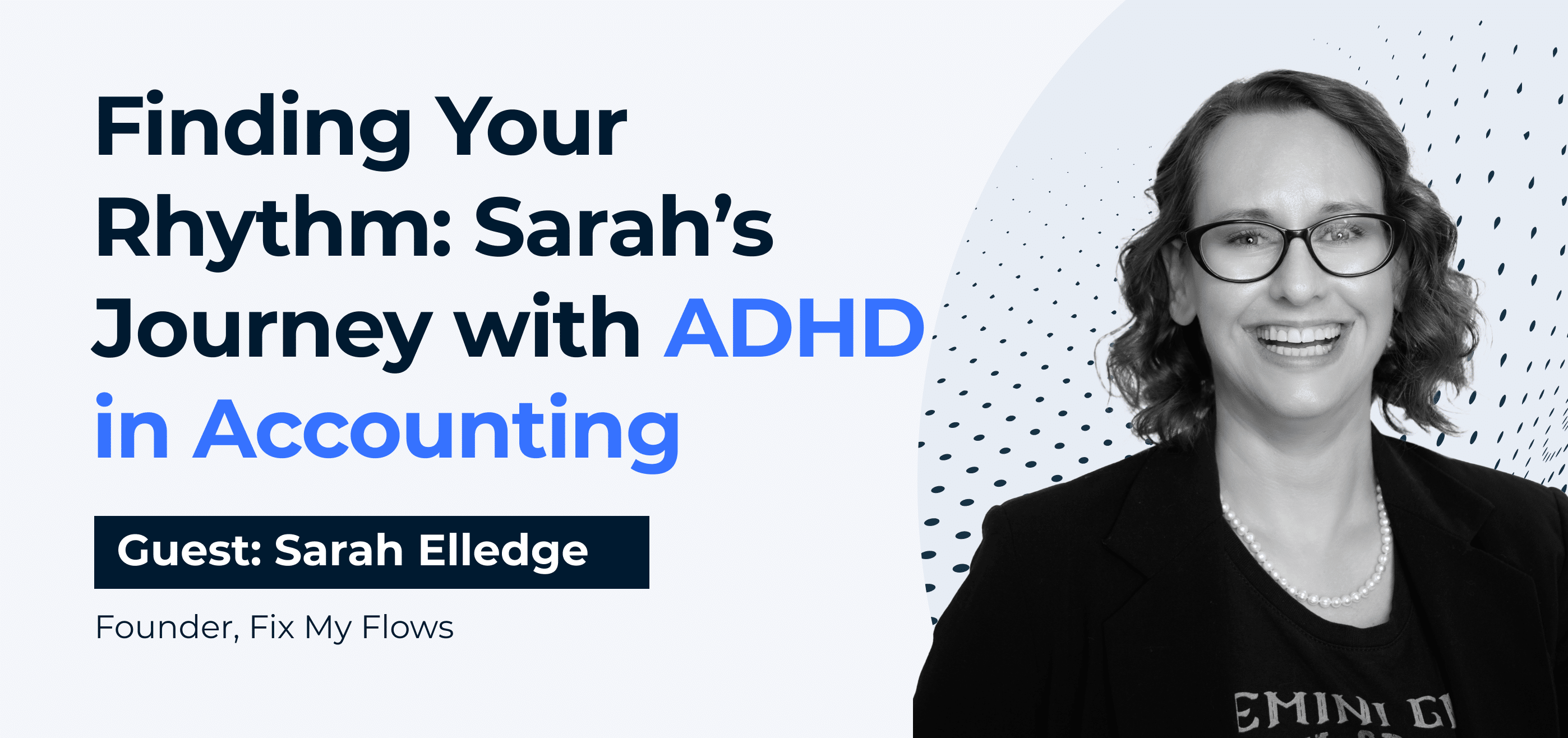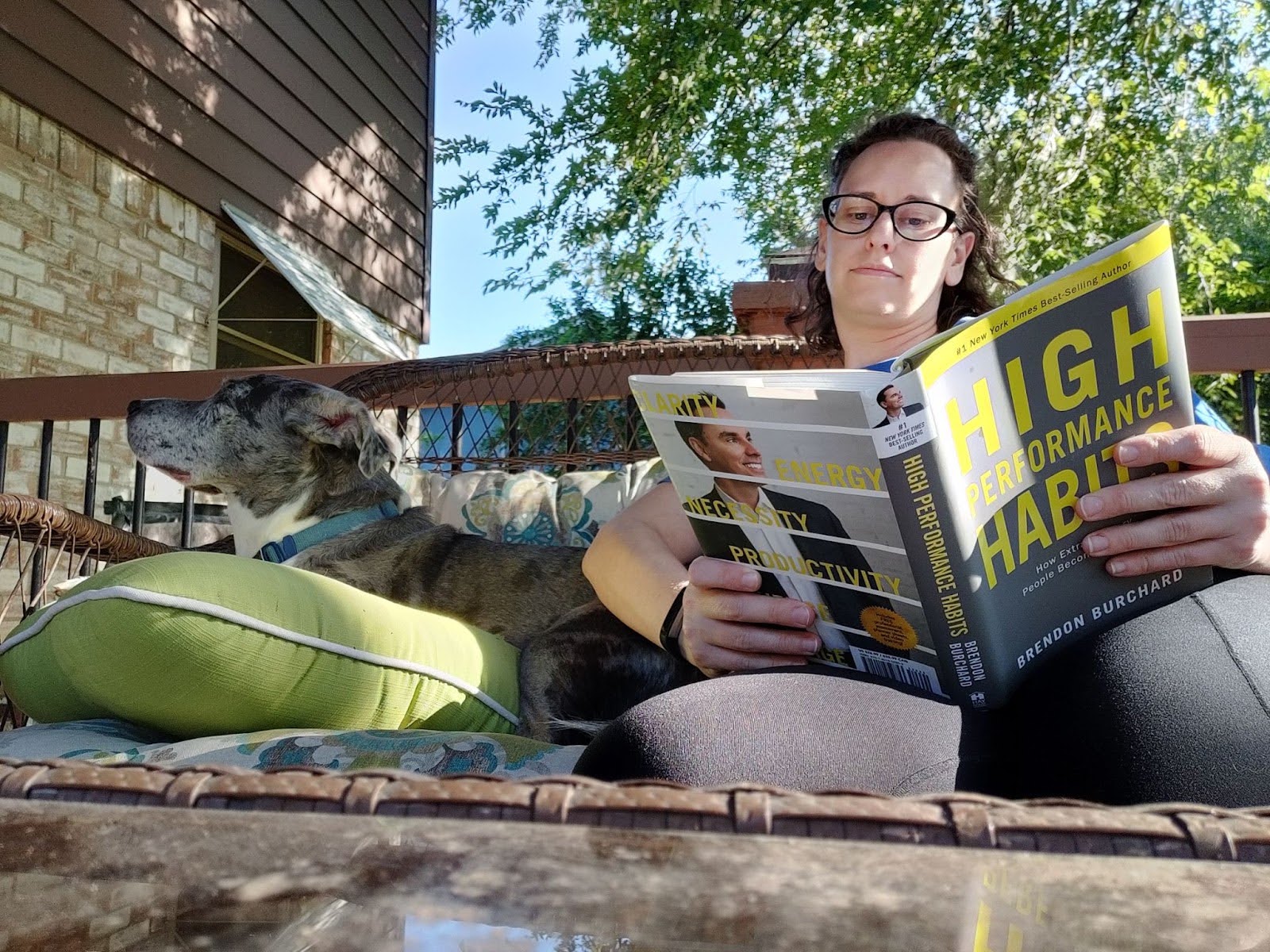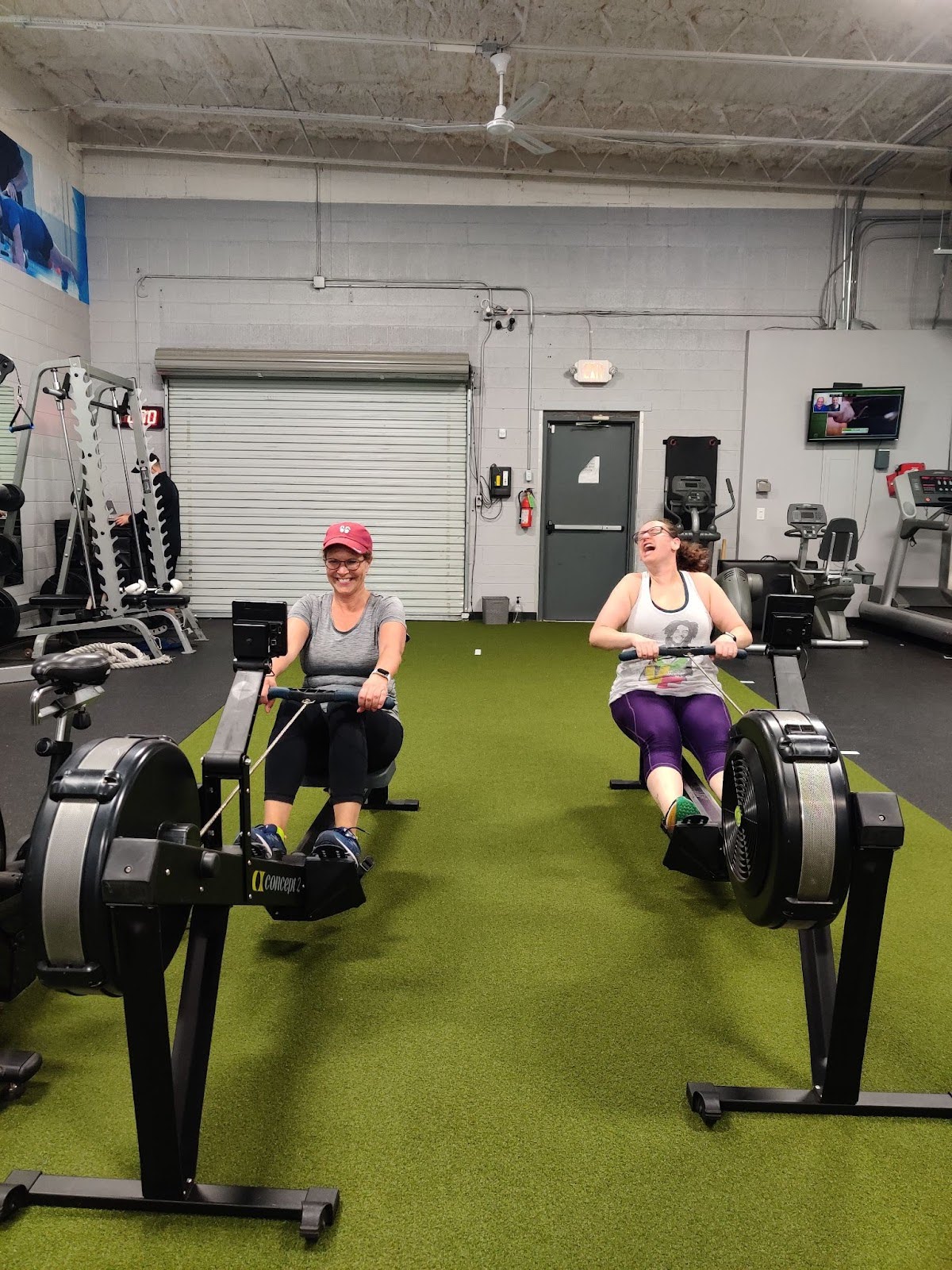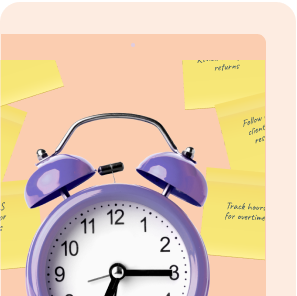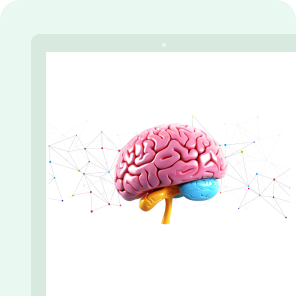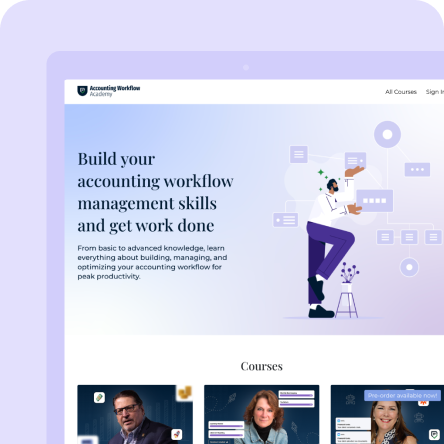Focus & Flow is a monthly series that features inspiring stories of accounting professionals with ADHD who have tapped into this unique strength for success.
The bass drops heavy through Sarah Elledge’s headphones as she settles into her fourth hour of deep focus. Her hips will ache when she finally stands up. She hasn’t moved, checked her phone, or noticed the sun shifting across her office wall. This is hyperfocus, the ADHD superpower that lets her compress ten hours of work into five.
But rewind three decades, and you’d find a little girl desperately trying to make sense of a brain that worked differently. A child who alphabetized her CD collection while other kids played outside. Who begged for calendars every Christmas and played “school” for fun when she got home from actual school.
She’s now a successful accountant who’s finally figured out why her brain craves chaos to find calm, why time seems to slip through her fingers like water, and why the traditional 9-to-5 workday felt like wearing shoes three sizes too small.
Financial Cents recently spoke with her about how she stopped fighting her ADHD and started dancing with it instead.
The Moment Everything Made Sense
Sarah was in her thirties when the pieces finally came together. She’d been searching for solutions to everyday struggles when she noticed a pattern.
“What kept popping up time and time again is, like, this ADHD hack,” she explains.
And I was like, but I don't have this, and then after you try enough things in that realm that work, you start to wonder."
The self-discovery process wasn’t easy. Sarah talked with her doctor, researched symptoms, and reflected on her experiences. While she doesn’t have an official diagnosis, her primary care physician agrees she’s on the right track.
“A lot of it was just doing that introspection,” Sarah says. “What is this friction that I’m feeling? And how can I name it now?”
Working With, Not Against, Her Brain
One of Sarah’s biggest breakthroughs was understanding how her brain processes focus. Unlike many people who need quiet to concentrate, Sarah discovered she needs lots of noise.
“If you’re gonna get quality work out of me, I need something loud in my ears to quiet my own brain so that I can focus,” she explains, gesturing to her large headphones.
But Sarah took this discovery even further. She learned to DJ and now creates her own mixes of dubstep and drum & bass music. When impostor syndrome strikes or work gets overwhelming, she puts on one of her creations.
“There is nothing that lights me up and locks me in more than putting on one of my own mixes,” she says with evident pride.
Music is already what fuels me. And now it's like, you did this."
Another major challenge Sarah faces is what she calls “time blindness.”
“I could not tell you if it’s been forty minutes or forty hours,” she admits. “Time does not compute for me.”
Before, she was inconsistent with 60% of her client deadlines because she couldn’t accurately estimate how long tasks would take or perceive the passage of time. She solved this by rigorously tracking every task. Logging start and end times to build a clear picture of true task durations and identify her peak efficiency windows. With that data in hand, she shifted her most demanding work into her high-energy periods and reserved lighter tasks for her lower-energy times.
“I spent a couple of years just trying to figure out when is my energy higher? When is it lower?” she explains. Her solution was revolutionary in its simplicity: she started planning her work around her energy cycles rather than forcing herself into a traditional schedule.
Radical Transparency in Business
Perhaps Sarah’s boldest move was being completely honest with her clients about how she works. Every new client receives a document explaining what to expect.
“I very clearly state in there: I know my energy cycles. I plan for it. I take a couple of days off every single month just because I’m not feeling it,” Sarah says.
Rather than hiding her ADHD, she embraces it:
This is a roller coaster. And you are along for the ride, and we're gonna enjoy it, but this is not a flat experience we're gonna have."
Surprisingly, this transparency has attracted clients who appreciate her honesty and even feel permission to honor their own work styles.
The Hyperfocus Advantage
While ADHD presents challenges, Sarah has learned to leverage its strengths, particularly her ability to hyperfocus.
“The ability to lock into a hyperfocus definitely helps,” she notes. When she recognizes friction in a system, she can dedicate hours to building a better solution.
She compares it to creating a complex Excel spreadsheet:
Someone who doesn't understand Excel is like, you spent thirty-seven hours building an Excel sheet. You're like, absolutely. Because now it takes me five minutes to do this thing for the rest of my time."
When Sarah enters these deep focus periods, she’s completely absorbed. “I do the thing where I get up and my hips are cracking because we haven’t moved in hours,” she laughs.
Rejecting “Power Through” Culture
One harmful misconception Sarah wants to address is the idea that people with ADHD should just “power through” their struggles.
“Your body is telling you to rest because you just cranked out ten hours of normal people’s work in five,” she explains. “Powering through it is not for us. We just work differently.”
This realization led Sarah to build strategic rest into her schedule. On days without large blocks of focus time available, she doesn’t force deep work. Instead, she tackles smaller, scattered tasks.
A Day in Sarah’s Life
Sarah’s daily routine is highly structured, starting at 5 AM with household tasks before settling into work by 8 AM. She prioritizes client work in the morning when her focus is strongest, schedules webinars during lunch, and saves internal business tasks for the afternoon when she might need a strategic nap.
“When I say I manage my calendar, I have an eight and a half block for sleep on there,” she emphasizes. Every aspect of her day is scheduled, including “prep for bed” time.
This might seem excessive to some, but for Sarah, it’s freedom. The structure allows her to work with her brain rather than against it.
The Future of Accounting
Sarah believes the accounting industry is changing, driven partly by neurodivergent professionals who are reshaping expectations.
“I think many neurodivergent people are hiding in accounting,” she observes. “Those people are now becoming firm owners. They’re making their own rules.”
She’s noticed a shift from time-bound roles to results-driven work, which better accommodates different working styles. This change benefits not just people with ADHD but anyone who doesn’t thrive in a traditional 9-to-5 structure.
When asked what she’d tell her younger self, Sarah’s answer is thoughtful:
Go deeper and get into your whys sooner than later."
She spent years exploring surface-level interests, graduating with double the required credits, consistently achieving but never truly understanding her patterns. “I did myself a disservice exploring a million things instead of really focusing on my strengths,” she reflects.
Creating Space for Others
Sarah’s openness about her ADHD journey is purposeful. She hopes others will share their experiences and challenges.
“I love talking about it,” she says warmly.
Solutions are my jam. I hope people will get comfortable so we can chime in with what we've done."
Her message is clear: if you’re struggling with similar challenges, you’re not alone. The accounting industry needs diverse minds and different approaches. Sometimes the very things that make us feel different are exactly what make us valuable.
It’s beautiful to see the kid who loved calendars grow up to master time in her own unique way. In doing so, she’s showing others that success doesn’t have to look the same for everyone.
